Bring out your favorite blues! It's Time to Talk Blue Topaz!
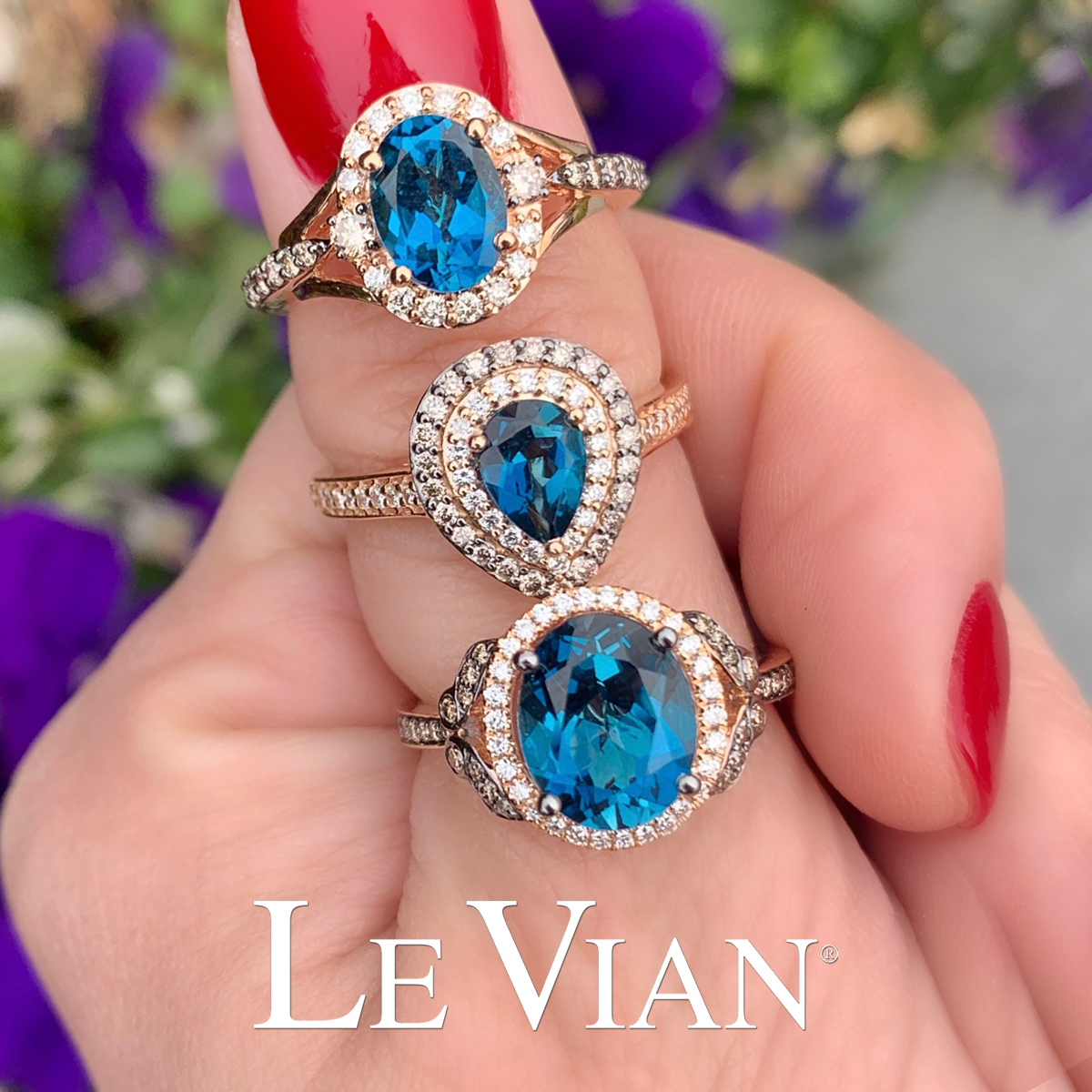
Deep Sea Blue Topaz™ Ring from the Le Vian Luxury Exclusive Collection
Top to Bottom: YQXS 1, YQXX 65, YRKT 41
Gem lovers are quite familiar with the December birthstone Blue Topaz but did you know that topaz offers an exceptionally wide color range? There are natural brown (the most common), orange, pink and, very rarely, red, plus various tones and saturations of blue, green, yellow, orange, red, pink and purple. (https://www.gia.edu/topaz)
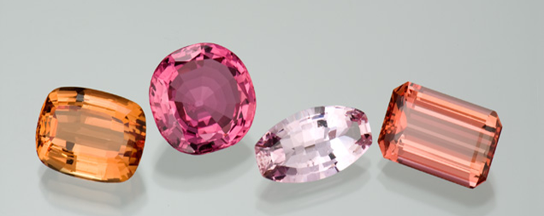
A sampling of Topaz Gems
The color varieties are often identified simply by “color-name” like blue-topaz, pink-topaz, and so forth. There are a couple of special trade names for particular colors of topaz, like the medium reddish orange to orange red Imperial Topaz, the 23rd Anniversary gemstone and one of the most expensive topaz gems. Another is Precious Topaz (a.k.a. Sherry Topaz), the November birthstone, which can be yellowish-brown to brownish-yellow to orange.
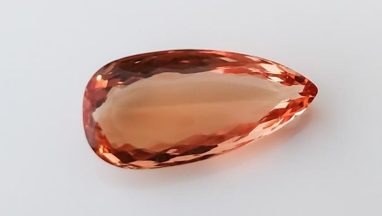
Imperial Topaz Gem
But back to the our favorite , the Blue Topaz, the 4th Anniversary gemstone, which was once the rarest color of topaz. Today, it is now the most common, due to an enhancement process that turns colorless topaz blue. How does this process take place? After the raw topaz is extracted from the earth and cut, it is irradiated to brown and then heated to different intensities of blue. This enhancement process is permanent. There are three categories of blue topaz, ranging from the darkest to the lightest tones - London Blue, Swiss Blue, and Sky Blue. Within these categories, there are also different qualities based on the presence of secondary colors, namely green and/or gray, and also different levels of intensity. Le Vian® chooses stones in the London Blue (Deep Sea Blue Topaz™) and Swiss Blue (Ocean Blue Topaz™) categories with the highest saturation and evenness of color, avoiding or minimizing secondary colors. Other colors are also obtained using this process; yellow, orange, and brown topaz gems can be turned into red or pink colors.

10 1/2 ct. Deep Sea Blue Topaz™ Ring
We love the ability to imagine shapes (see a few examples below!)
and cutting to really bring out the beauty of the gem!

What is Topaz?
Topaz is a mineral species that is made from aluminum silicate, containing fluorine, which forms in the orthorhombic crystal system. The main source for this stone is Brazil, although many other countries also produce. Like all gems there are elements within their environment as they developed that bring about their color. The element Chromium causes natural pink, red, and violet to purple colors in topaz. Other times, an irregularity in the crystal structure can determine their color as is the case with yellow and brown topaz. Colorless topaz (white topaz) or what Le Vian has named Vanilla Topaz™ is plentiful. It is often the colorless topaz that is treated to give it a blue color, since strongly saturated blue topaz is extremely rare. Precious topaz, which is also known as sherry topaz, is a yellowish-brown to brownish-yellow to orange colors. The stones in this color range are called precious topaz to help distinguish them from the similarly colored, but less expensive, citrine and smoky quartz. Another interesting facet of this gem is that topaz is pleochroic, meaning that the gem can show different colors in different crystal directions.
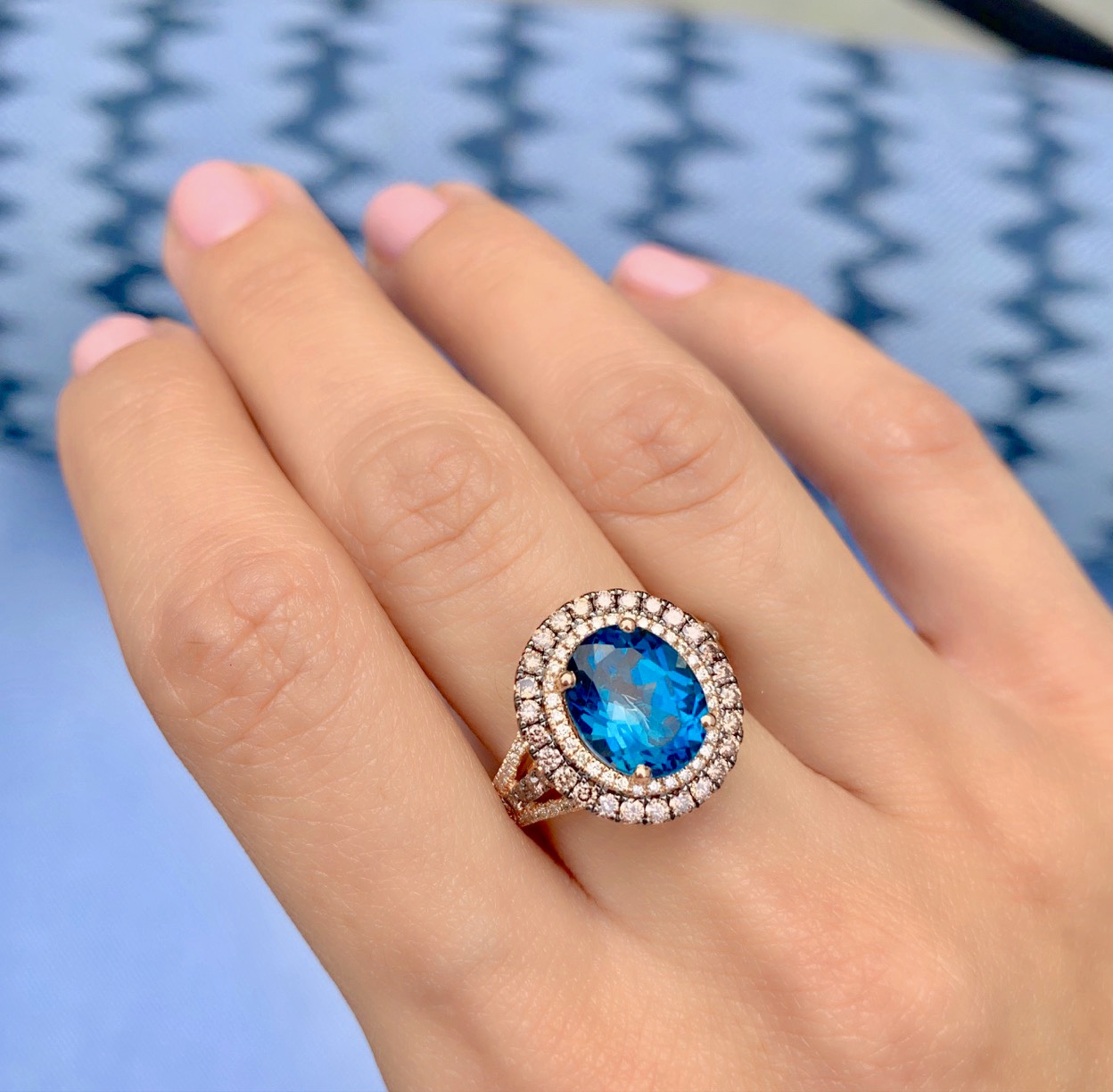
Le Vian Deep Sea Blue Topaz™ Ring
What are the most valuable Topaz gems?
The most valuable color and the most difficult color to source in this stone is pink. Pink Topaz can come in a light pink to a saturated pink which is very rare and is considered a collector’s item. The 2nd most valuable color is the Imperial Topaz. It’s an orange to reddish orange color. 3rd is the Precious Topaz which is yellow to brownish yellow to yellowish brown. The 4th would be Blue Topaz which comes in different intensities.
Where does the name Topaz come from?
Well, that is up to debate! Most are in agreement that the name topaz comes from the Greek “Topazios” the old name referring to a small Egyptian island in the Red Sea. (Although this island never produced topaz, it was once a souce of peridot, which was confused with topaz before the development of modern mineralogy.) Others trace the origin to Sanskrit and the word topas or tapaz, meaning “fire.”
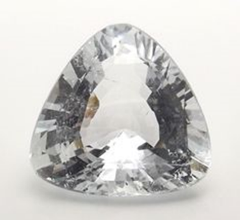
Colorless Topaz
Ancient Lore of Topaz
The ancient Egyptians believed that topaz was colored by the glow of the sun god, Ra. The ancient Greeks believed topaz had the power to increase strength and make its wearer invisible in times of emergency and in Europe during the Renaissance Period (1300s to the 1600s) people thought that topaz could break magic spells and dispel anger. For centuries, many in India believed that topaz worn above the heart assured a long life, beauty, and intelligence. Early discoveries of topaz from Brazil adorned the jewelry of the 18th and 19th Century Russian Czarinas, earning the stone the moniker of “Imperial Topaz.” At the time, the orangey pink gemstone mined there was named to honor the Russian czar. Ownership of the gem was restricted to the royal family.
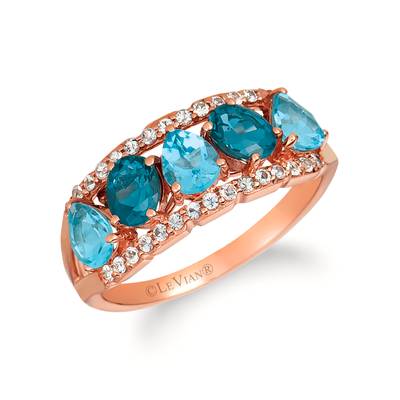
This ring features a mix of Blue Topaz Gems
How to Wear and Care for Topaz
Topaz has a good degree of hardness with a rating of 8 on the Moh’s scale, however it has a poor toughness rating. What does that mean? Care must be exercised when wearing topaz to prevent it from sharp blows. If dropped on a hard surface, topaz is capable of cleaving as it has perfect cleavage in one direction. All colors of topaz can safely be cleaned using alcohol and a soft toothbrush, but should be protected from heat, and never cleaned in an ultrasonic cleaner or with a steamer.
